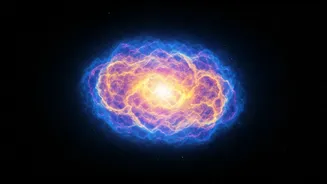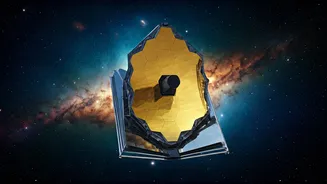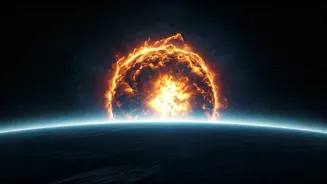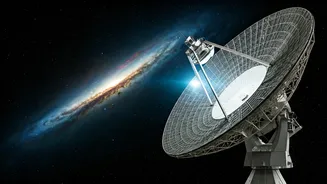Webb's Stellar Glimpses
The James Webb Space Telescope (JWST) has rapidly become a central figure in modern astronomy. Its unparalleled capabilities have led to significant advancements
in our understanding of the universe. One of the most exciting prospects is the potential of the JWST to observe the first generation of stars, which formed shortly after the Big Bang. These stars, vastly different from those we see today, played a crucial role in shaping the early cosmos. If confirmed, this observation would provide valuable insights into the formation and evolution of the first galaxies. The JWST's capacity to detect infrared light allows it to peer through dust clouds and observe distant objects. This capability is helping to resolve many mysteries about the universe's past, and it is reshaping our understanding of the cosmos' earliest moments.
Supernova's Genesis
Supernovae, the explosive deaths of massive stars, offer a unique opportunity to study stellar evolution and the creation of elements. Recent observations have provided exceptional insights into these powerful events. Scientists have captured the initial moments of a supernova, revealing an olive-shaped blast. This breakthrough allows for a deeper understanding of how these cosmic events unfold. The study of supernovae is vital for understanding the origins of elements heavier than hydrogen and helium. These elements are created within stars and dispersed into space during supernovae, and these elements make up planets, and even ourselves. The analysis of these initial moments also allows astrophysicists to model the behaviour of matter under extreme conditions, providing essential clues about the workings of the universe.
Exoplanet Explorations
Beyond our solar system, the hunt for exoplanets, or planets orbiting other stars, continues to reveal fascinating discoveries. One particularly interesting finding is the possibility that the exoplanet GJ 251 c, a nearby super-Earth, may help scientists learn about worlds that might have once supported life. Super-Earths, planets with masses larger than Earth but smaller than Neptune, are common in the Milky Way, and they offer a prime target for studying planetary habitability. By studying the atmospheric composition and environmental conditions of these planets, astronomers hope to gain insights into the potential for life beyond Earth. The study of exoplanets also extends to the search for biosignatures, indicators of life such as certain atmospheric gases. These efforts could reshape our understanding of the conditions that support life in the universe.
Mars' Seasonal Streaks
The exploration of Mars also offers vital clues about the potential for life beyond Earth. Recent research using AI-assisted studies has examined the Martian surface, seeking evidence of liquid water in the seasonal dark streaks that appear on the planet's surface. These streaks, which appear and disappear with the Martian seasons, have sparked considerable interest due to the possibility that they are caused by flowing water. However, the AI-assisted study revealed that no definitive evidence supports the presence of liquid water in these features. This does not mean that the possibility of liquid water is entirely ruled out. The challenges of studying Mars continue to drive exploration and innovation, pushing scientists to refine their methods and instruments to understand the Red Planet's secrets.












